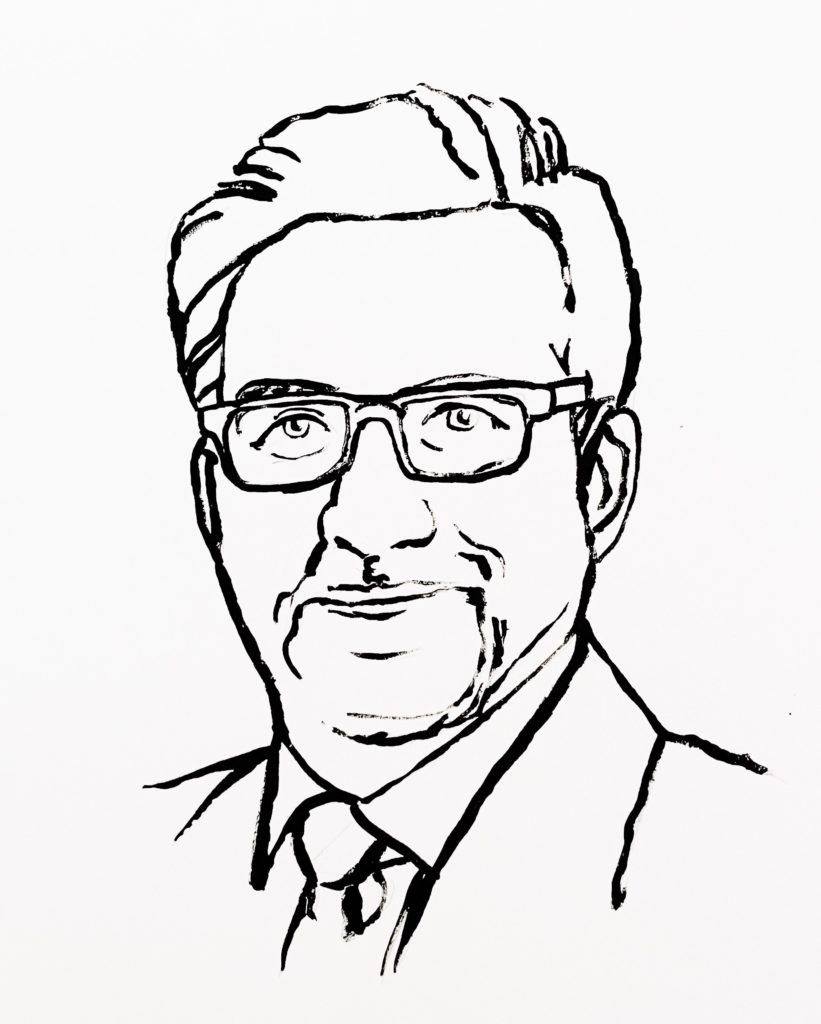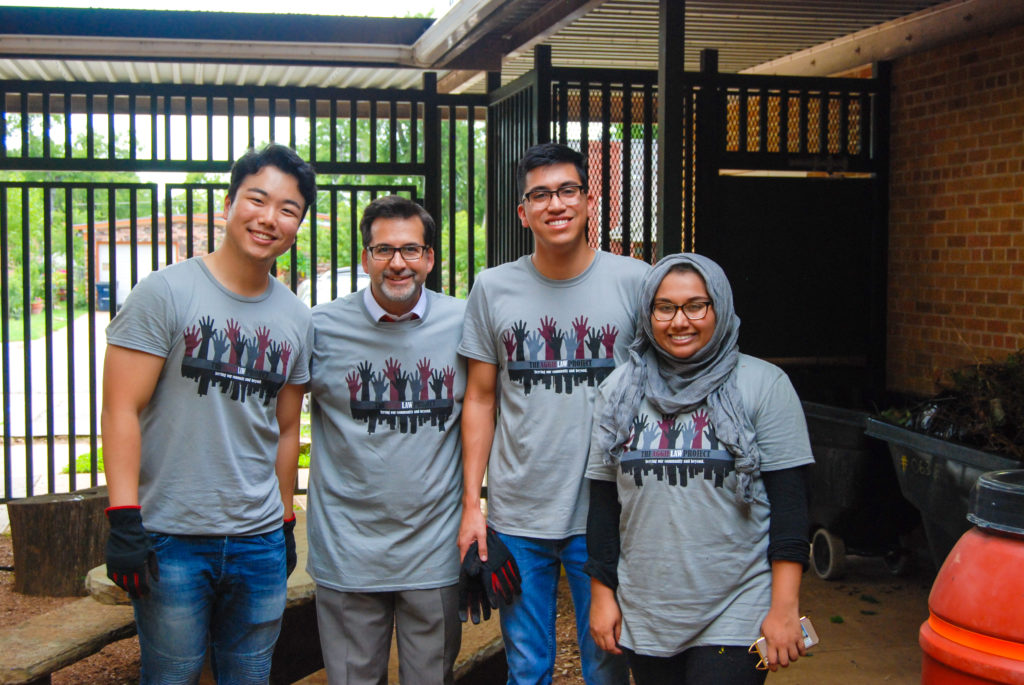
Rendering of planned Texas A&M campus in downtown Fort Worth
FORT WORTH – The Texas A&M University School of Law intends to become one of America’s greatest law schools.
“If you think that’s crazy, try to stop us,” said John Sharp, chancellor of the Texas A&M University System.
“The top 10 is where we ought to be. I believe we’re on track to do that in the next few years.”
And the so-important U.S. News & World Report law-school rankings since Texas A&M acquired the Fort Worth school nine years ago make Sharp’s ambition, well, no Aggie joke.
No one ever accused Aggieland of lacking pride, ambition or self-confidence.
And if propelling its law school into the company of Harvard and Yale, Stanford and Berkeley, Columbia and NYU seems, if not quite crazy, then at least far-fetched, consider the school’s progress in the nine years since Texas A&M bought it in 2013 from Texas Wesleyan University.
In the newest U.S. News ranking, published March 29, A&M was 46th, one of only two Texas schools in the top 50. (The University of Texas at Austin School of Law, the state’s flagship law school, was 17th, tied with the Boston University School of Law and Vanderbilt Law School.)
In specialty programs, U.S. News said, A&M ranks fourth in the country in alternative dispute resolution and sixth in intellectual-property law.

Dean Robert Ahdieh
Forty-sixth place is still a far piece from the Ivy League, as no one from Harvard (except maybe Tommy Lee Jones) would say.
But just three years ago, U.S. News said A&M was No. 83. The next year, it was 60th and, last year, 53rd.
On the 2015 list, the first released by U.S. News after A&M acquired the Fort Worth campus, the law school was unranked. For 2016, it was 149th.

Sharp and others say much of the credit for the school’s impressive rise goes to Dean Robert Ahdieh who was hired in 2018. Ahdieh, a graduate of Princeton University and Yale Law School, came to Fort Worth from the Emory University School of Law in Atlanta, where he’d been a professor of private international law and, from 2011 to 2017, vice dean.
“He’s a high-energy guy,” said Randy D. Gordon, an executive professor at the A&M law school and managing partner of the Dallas office of Duane Morris. “You figure that out in the first two minutes after meeting him.”
(Actually, in my case, it was more like two seconds. When I visited the school to interview him, Ahdieh – pronounced like “adios” except with “ay” at the end – fairly bounded from his office to introduce himself thusly: “I’m Bobby! Have you been to the school before? Do you want a tour? C’mon, I’ll give you a tour.”)
Gordon said he’s been closely involved with the school for six years, teaching classes in antitrust law, RICO, class actions, and legal theory, “and I’ve seen the march upward. The quality of the faculty hires has been terrific. The academic credentials of our incoming students, at least a rough surrogate for how they’ll do as law students and lawyers, have gone up steadily year after year. We have greater diversity in our student body than ever before. And they’re really smart.
“Just for instance, one of my current students has landed a clerkship with the Eight Circuit [Court of Appeals], and I have hired three students from my classes at Duane Morris.”
Sharp (A&M Class of ’72) said, “There’s a bunch of schools that have tried to hire Bobby away from us. That’s not happening.
“I’ve told Bobby, whatever it takes in resources to make us the best law school in Texas, he’ll have them. We’re going to make that law school big medicine. I mean really big medicine. The top 50 is not what we’re aiming at.”
Last November, Sharp announced plans for a major A&M “research campus” in downtown Fort Worth, to be anchored by a new home for the law school. (Its current home, a two-story building that was once a Southwestern Bell switching station, can best be described architecturally as “functional.”) No firm date has been announced for breaking ground.
“The A&M System is making a Texas-sized commitment to Fort Worth,” Sharp said in announcing the project. “Welcome to Aggieland North.”
Like any “best of” list, the U.S. News rankings are somewhat subjective – or, depending on where one finishes, capricious. (In Cambridge, Massachusetts, the big news from the U.S. News list was that Harvard Law had slipped from No. 3, behind Yale and Stanford, to a tie with Columbia, for fourth place. “A Harvard Law spokesman,” Reuters reported, “declined to comment on the rankings.”) Does anyone really know, after all, what’s the best rock album ever? Or the best pizza in New York?
Or the 46th best law school in the United States?
“But when you look at the trendline,” Ahdieh said, “our progress is unmistakable.”
More important than the school’s numerical ranking, he said, is how A&M has fared in the four criteria U.S. News uses to compile its ratings: “successful placement of graduates, faculty resources, academic achievements of entering students, and opinions by law schools, lawyers and judges on overall program quality.”
In each of those broad areas, the dean said, “we’re making gains across the board. We’re building our reputation in Texas and beyond. We’re attracting quality students. We’re hiring quality educators, and we’re committed, from the chancellor’s office on down, to providing the resources they need both to teach and to engage in first-rate legal scholarship.
“If you do those things, and do them consistently, the result over time will be quality outcomes.”

Dean Ahdieh (Second from Left) with students during a law school community service project.
Currently, the school has a full-time enrollment of just over 500 students. Last year, 93 percent of its graduating students who took the Texas state bar exam passed.
Ahdieh noted with pride that last week an A&M professor, Gabriel Eckstein, was at the International Court of Justice in The Hague, arguing in behalf of Bolivia in a longstanding water-rights dispute with Chile – while students in Fort Worth gathered at 8 a.m. in the school’s conference center to watch the proceedings via video.
A recent faculty hire of particular note was that of William M. Sage, a lawyer and medical doctor who teaches in both the UT law and medical schools.
Sage, formerly UT’s vice provost for health affairs, said of the move: “My career has been dedicated to health law and policy, and my training and experience reflect multiple professions and perspectives. For me, Texas A&M University and the Law School offer an exciting opportunity to build something new that connects educational disciplines, brings together thinkers and doers, and helps meet the future health needs of all Texans.
“I feel that energy and ambition at Texas A&M Law.”
Ahdieh isn’t quite as exuberant as his chancellor in forecasting the law school’s trajectory. But he’s close.
“I don’t intend to be the dean who saw us reach our peak, then plateau,” he said. “We have the willingness and the capacity to go to the next level.” Pressed for a number, he said: “With A&M’s commitment to this institution, there’s absolutely no reason we won’t be in the top 40, or the top 30. That’s all in the plans. Beyond that, who knows?”
